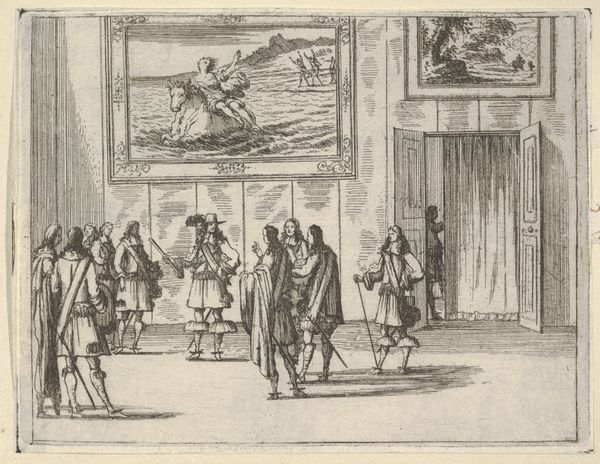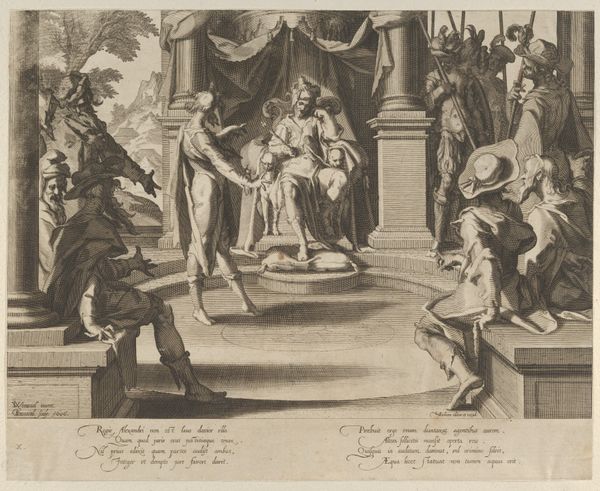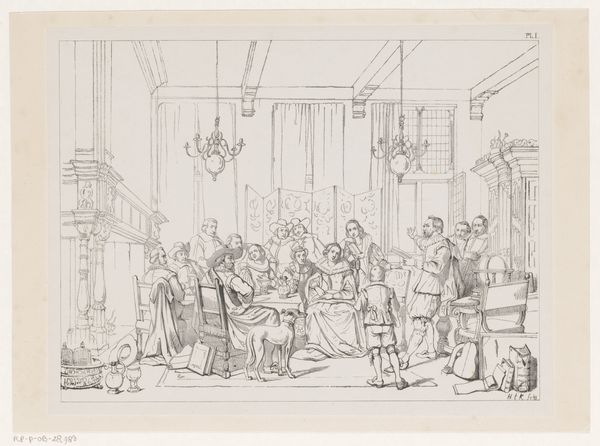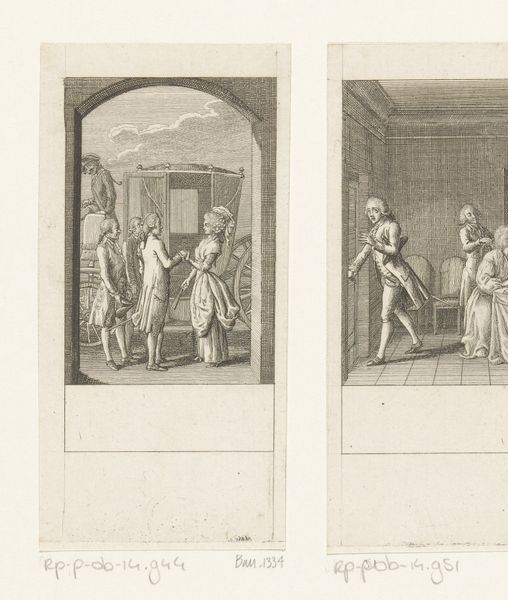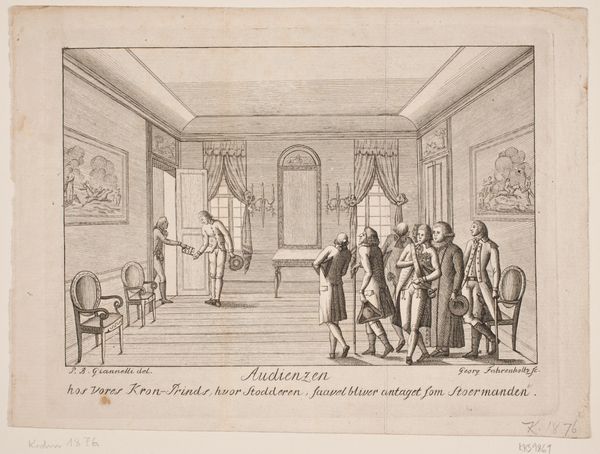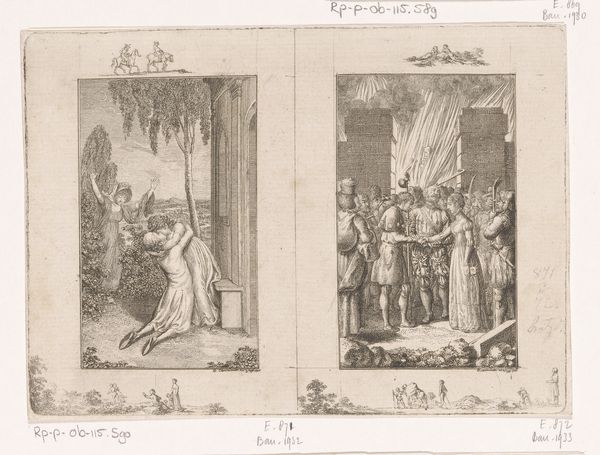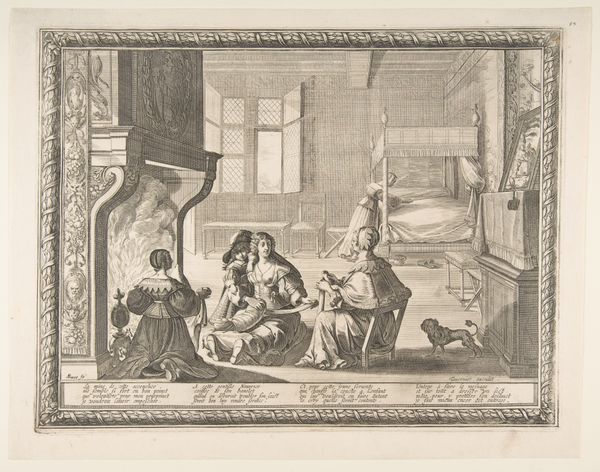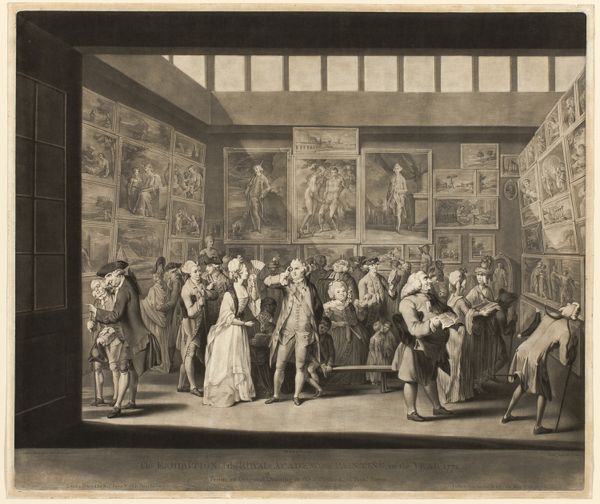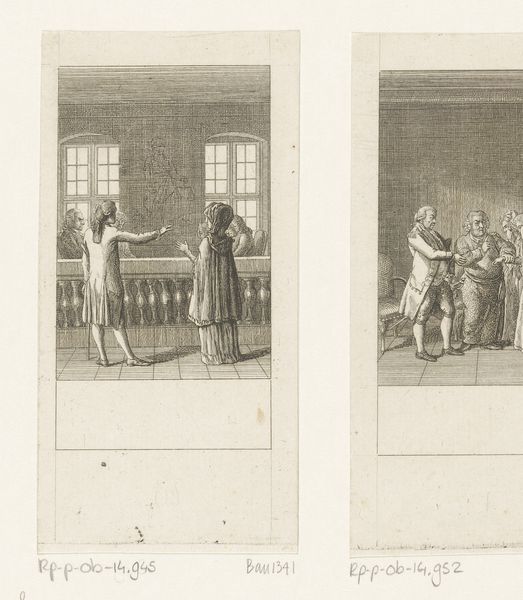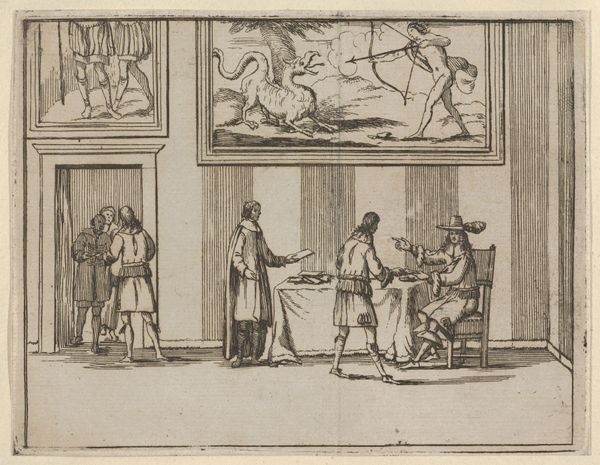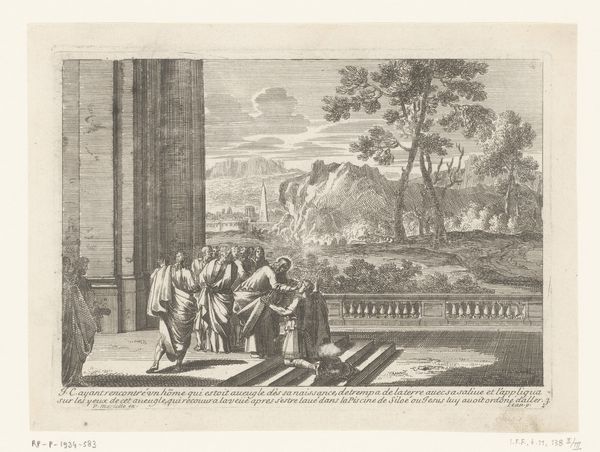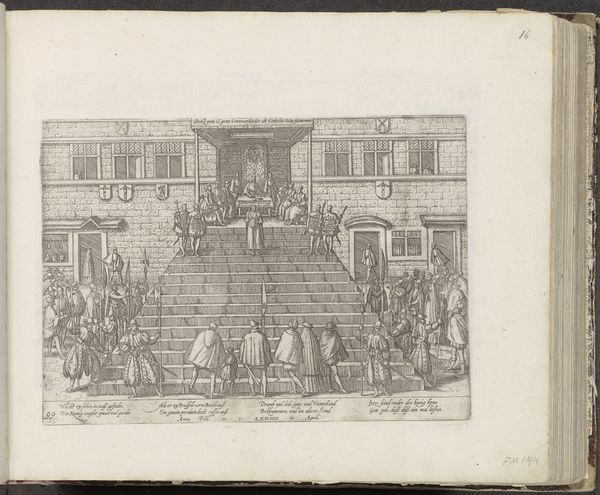![Francesco I d'Este Invites Foreign Scholars to Court, from L'Idea di un Principe ed Eroe Cristiano in Francesco I d'Este, di Modena e Reggio Duca VIII [...] by Bartolomeo Fenice (Fénis)](/_next/image?url=https%3A%2F%2Fd2w8kbdekdi1gv.cloudfront.net%2FeyJidWNrZXQiOiAiYXJ0ZXJhLWltYWdlcy1idWNrZXQiLCAia2V5IjogImFydHdvcmtzL2NhYjU3ZDQ3LTE2ZDctNGM1Zi1hZjIzLTA1ZGNjMmU0ZWQ3ZC9jYWI1N2Q0Ny0xNmQ3LTRjNWYtYWYyMy0wNWRjYzJlNGVkN2RfZnVsbC5qcGciLCAiZWRpdHMiOiB7InJlc2l6ZSI6IHsid2lkdGgiOiAxOTIwLCAiaGVpZ2h0IjogMTkyMCwgImZpdCI6ICJpbnNpZGUifX19&w=3840&q=75)
Francesco I d'Este Invites Foreign Scholars to Court, from L'Idea di un Principe ed Eroe Cristiano in Francesco I d'Este, di Modena e Reggio Duca VIII [...] 1659
0:00
0:00
drawing, print, engraving
#
portrait
#
drawing
#
baroque
# print
#
cityscape
#
history-painting
#
engraving
Dimensions: Sheet: 4 13/16 × 6 3/8 in. (12.3 × 16.2 cm) Plate: 4 13/16 × 6 1/4 in. (12.3 × 15.9 cm)
Copyright: Public Domain
Editor: This engraving, created in 1659 by Bartolomeo Fenice, is titled "Francesco I d'Este Invites Foreign Scholars to Court." The fine lines create an incredibly detailed scene of what seems to be scholars gathered around a map. What strikes me most is the staging, how it feels like the figures are performing rather than genuinely engaging. What's your interpretation? Curator: You're right to observe the theatrical quality. In the Baroque period, images of rulers like Francesco I were carefully constructed to project power and cultivate a specific image. Note how he's positioned in the foreground, seemingly receiving scholars. Consider the historical context: this print isn't simply about scholarship, it’s about strategically visualizing and promoting Francesco I's political ambitions and cultural influence. What aspects of the composition lead you to see the sense of 'staging' you mentioned? Editor: Perhaps the way the figures are arranged in relation to the Duke, and how they direct our gaze back towards him. It’s all carefully placed. It feels less like an everyday scene and more like an intentional presentation. Curator: Exactly. And the prominent map in the background? This serves as more than decoration; it symbolizes Francesco’s worldly vision, reinforcing the notion that this court is not isolated but a center for international exchange and power. This wasn't just about recording an event; it was about manufacturing and disseminating a particular narrative of enlightened rule, a form of early modern propaganda, if you will. The distribution of such images through prints played a critical role in shaping perceptions. Editor: That makes me rethink what I thought I knew about "history paintings" and portraiture! So, this piece demonstrates the tight connection between art, power, and propaganda. Curator: Precisely. Looking at this print, we learn as much about 17th-century European socio-political landscapes as we do about art. Understanding the mechanisms behind image production and dissemination sheds light on the political objectives and construction of reputation of figures such as Francesco I. Editor: It’s fascinating how much this detailed print reveals about the time and the social climate in which it was made, influencing how it was received. I now look at the artwork in a different light.
Comments
No comments
Be the first to comment and join the conversation on the ultimate creative platform.
